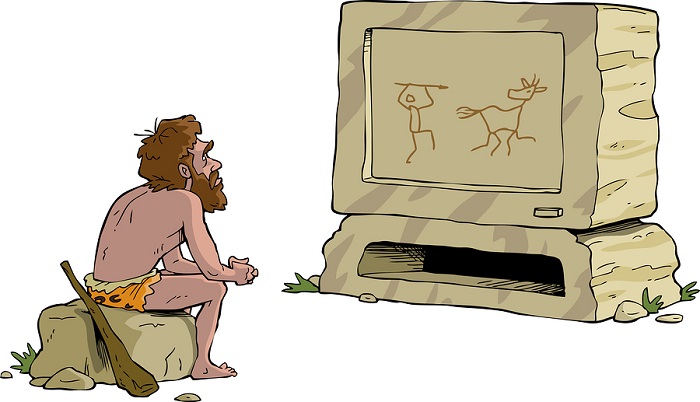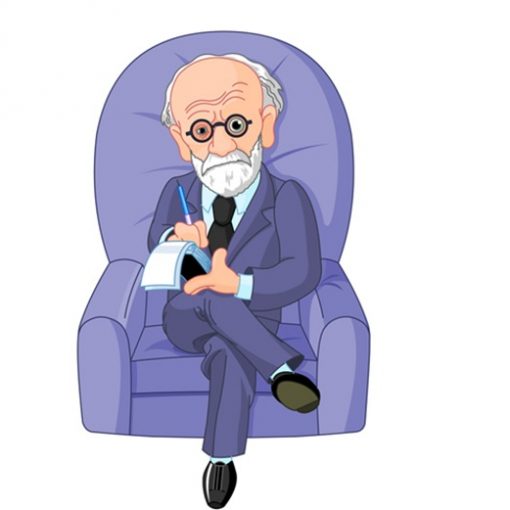
Introduction
The problem posed by the discovery in 1911 of Ishi, the last of the Yahi tribe in California, is one I like to call the ‘The Ishi Challenge’. In a short space of time Ishi learned English and took a job in a museum, which also became his home until he died. Most remarkably he appears to us as an entirely modern human being as he acquainted himself with the mores of Edwardian society. But here lies the challenge: his culture was Mesolithic, and he had lived quite literally a Stone Age existence until he was forced to join the modern era. Furthermore it was the so-called ‘civilised’ whites who practised brutal genocide on his people and not the other way round.
The year 2011 marked the hundredth anniversary of the year in which Ishi, the very last survivor of the Native Americans Yahis in the Californian forests, took the risky step of entering the white man’s world. What we know of him should make us all stop and think about the challenge he poses to our assumptions.
Ishi
The primary source material for Ishi’s life is Ishi in Two Worlds by the anthropologist Theodora Kroeber. She was the second wife of Alfred L. Kroeber, the pioneering American anthropologist who carried out the main studies on Ishi. Their daughter was famous novelist Ursula K. Le Guin. Theodora Kroeber’s book was the source for two films: the documentary Ishi: The Last Yahi, and a fictionalised version, The Last of His Tribe, with well-known Native American actor Graham Greene in the title role. Thomas Merton, the renowned Trappist monk, was moved enough by Ishi’s story to write a book on him, Ishi Means Man, and researchers continue to uncover his place in the wider history of the Native Americans.
Kroeber documents how Ishi, after all his family and tribe were killed by whites, walked out of his remote Californian fastness into the white civilisation of 1911. He was taken up by Alfred Kroeber, and soon made headlines naming him an ‘Aboriginal Indian’ or the ‘Last Stone Age Man’. Ishi became a kind of living exhibit at the Museum of Anthropology in San Francisco, acting as an informal research assistant and resource to Kroeber, Ishi’s position later regularised as a kind of janitor in order to permit him a salary. He lived for a while in the museum itself and briefly with the family of anthropologist Thomas Talbot Waterman, Kroeber’s junior. Ishi’s closest friends up to the time his death in 1916 were Thomas Waterman, Alfred Kroeber, and Saxton Pope, a surgeon in the nearby medical school.
Theodora Kroeber reconstructs Ishi’s early life from the details he provided, cross-referenced with the anthropological knowledge of the day. The Yahi were a sub-group of the Yani who lived a broadly Palaeolithic (or possibly Mesolithic) huntergatherer life with no metals, no weaving or pottery, no agriculture, and no animal husbandry. Ishi was a skilled bowman (leading his friend Pope to take up the weapon and become the ‘father of modern bow hunting’), and a skilled flintknapper in obsidian (leading to Ishi being widely revered in such circles to this day). Though clearly nervous of the modern world with its terrifying population density – a fact more bewildering than any of the new technologies he encountered – Ishi rapidly learned a basic English; mastered all the ways of city life including modern clothes and table etiquette; and took pride in his salaried position and his ability to make monthly savings. Little details stick in one’s mind: such as the speed with which he learned how to tie the fashionable ‘four-in-hand’ cravat due to his long experience of knotting hemp ropes.
Kroeber convinces us that Ishi’s rapid adjustment to the ‘trolley-world’ of San Francisco is proof that ‘Stone Age man and modern man are essentially alike’. This is a startling proposition to many people, though I was somewhat prepared for it through a wider reading of the Native American literature, in particular the accounts provided by Black Elk, Lame Deer, Yellowtail and Leonard Crow Dog.
Evolution of Consciousness and Culture
But how could Stone Age people be ‘essentially alike’ to modern people? A wide range of contemporary thinkers assert and explore the idea that human consciousness and culture has enormously evolved since Stone Age times, and some are even passionate about accelerating that evolution as an answer to the problems facing humanity. It would be impossible in a short article to give a proper overview of this field so I will take a remark from Clare W. Graves in the context of Spiral Dynamics to start with: ‘… the psychology of the mature human being is an unfolding, emergent, oscillating, spiralling process, marked by progressive subordination of older, lower-order behaviour systems to newer, higher-order systems as man’s existential problems change.’ Most thinkers in the field would agree with this I imagine, where the progressive development implied by Graves is intimately bound up with consciousness and also culture. Don Beck says that his Spiral Dynamics Integral ‘is based on a belief in the Invisible Spiral, the Prime Directive that works in human nature to continue our quest toward greater complexity.’ Taking these two statements together I think we have a fairly representative picture of progress from lower-order to higher-order human behaviours distinguished by their complexity. Consciousness – it is held – in advanced humans is more complex than in less advanced humans, and more complex still than in animals. The same holds true for culture. Both have evolved, surely?
At the time of Kant however there was no consensus on human progress at all. He weighed up the existing evidence for and against, and decided marginally against. Of course, since that time an increasing number of thinkers did come out in favour of progress, notably Hegel. Darwin’s ideas, which in biological terms had nothing to say about human progress, were nonetheless read as indicating a grand sweep of life towards ‘higher’ forms. In the religious undercurrents of the West that eventually fed into New Age thought, writers like Sri Aurobindo and Richard Maurice Bucke at the end of the 19th century reframed spirituality in almost Hegelian terms. At the end of the 20th century Ken Wilber and Don Beck represent more recent theorizing of such spiritual progress, while the American spiritual teacher Andrew Cohen is committed to ‘evolutionary enlightenment’. More recently consciousness studies gained a foothold in academic research, and all kinds of speculative work has been put forward endorsing the notion of the evolution and progression of human consciousness, albeit across quite varied timeframes. For example Julian Jaynes suggested that consciousness emerged as late as three thousand years ago in the breakdown of the ‘bicameral mind’.
So many distinguished thinkers in the last 200 years have contributed to the notion of progress in general and to the evolution of culture and consciousness that it has become almost an orthodoxy.
The Counter-Orthodoxy
While Kant’s thought today is still highly regarded, very few take his views on the non-progress of humanity seriously. Where then do we turn if we want to consider arguments for a counter-orthodoxy? One answer is the East. Beyond the Western cultures broadly dominated by the three great monotheisms, the idea of progress is not just unknown, it is often reversed. The Indians famously believe in devolution rather than evolution. The Chinese appear to believe in equilibrium rather than either evolution or devolution. But the dominance of Western ideas and the hold that broadly monotheistic religion has gained over Eastern cultures means that Western ideas of progress are muting the older views on the subject. Hence I want to take instead the view of the historian, Arnold J. Toynbee, who framed his objection to progress in more Western terms. In one of his historical surveys he states: ‘Technology is the only field of human activity in which there has been progression. The advance from the Lower Palaeolithic to mechanized technology has been immense. There has been no corresponding advances in human sociality, though advances in this field have been called for by the changes in social conditions that have been imposed on mankind by its technological progress.’
This is a devastating indictment! Can he possibly be right? It all depends perhaps on the rather vague term ‘sociality’ that he uses here, though clearly he intends it to include the moral sphere. If we take culture to be broadly inclusive of science, technology, philosophy and the arts, then as Graves and Beck would insist, these have advanced enormously in their complexity and sophistication. But has morality advanced? Proponents of the evolution of culture will cite things like the abolition of slavery and the spread of women’s rights, which are obvious advances in the field of ‘sociality’. But Tonybee’s point is this: such advances were only necessary because technological progress created new scope for human suffering. Slavery is impossible in a huntergatherer culture, only emerging with the development of agriculture and surplus grain. Paid armies and large-scale warfare are only possible on the same basis. The Enclosures Acts in Britain were part of the ‘progress’ of the eighteenth century which forced millions into the dreadful factory conditions so vividly described by Marx, Engels, Dickens and Jack London, to name just a few. Of course the Factory Acts, universal franchise and labour unions were all wonderful pieces of progress which gradually undid some of the harm of the Enclosures Acts and the Industrial Revolution, but where in all of this is the overall progress in sociality?
The Ishi Challenge
So, what does it mean when a man raised in a Stone Age culture acquires all the skills of Edwardian sociality within less than five years? What does it mean when such a man is propelled from the alleged ‘simplicity’ of his Stone Age world – innocent even of weaving, pottery and of course any use of metals – to the ‘complexity’ of San Francisco with its operas, motor-cars, aeroplanes, telegraph, factories, railways and universities with such ease? What does it mean for culture and consciousness that Ishi mastered this transition in so short a time?
On the theories put forward by Graves and Beck, and popular with a wide range of serious thinkers today, Ishi’s culture embodied ‘lower-order behaviour systems’ of drastically less complexity than those of the modern whites. Yet in the encounter of the Yahi tribe with the white settlers in California, the Yahi generally experienced behaviour systems amongst the whites which can only be described as brutal and genocidal. Graves suggests that ‘man’s existential problems change’ leading to higher-order behaviour. But, while the Native Americans and the settlers had incompatible landuse patterns, both faced the same existential question of survival. And nothing reminds us more that this original existential question of survival is absolutely contemporary than climate change, which has already produced its first wars. As the Nazis showed, ‘lower-order behaviour systems’ can emerge at the drop of a hat. And perhaps ‘higher-order behaviour systems’ were around in the Stone Age.
But perhaps Ishi’s transition just says something about culture: that it can be acquired very fast. Perhaps it says nothing about consciousness. Perhaps Ishi retained an unevolved primitive Stone Age consciousness while performing the outward gestures of modern culture. This takes us of course to the rather difficult problem of pinning down what consciousness is. My own way of dealing with it goes like this. If one were to have been admitted to Ishi’s circle of white friends at the museum where he lived for those short five years, I would ask: on what basis could one distinguish his consciousness from those of Kroeber, Waterman and Pope? It seems to me that in the equal and courteous exchanges demanded by normal human sociality one has to grant equal consciousness to those one comes to know through such exchanges. Kroeber was a professor of anthropology while Ishi ended up with paid employment as lowly research assistant and janitor in the faculty. Yet over dinner, Ishi’s impeccable table manners, courtesy, good humour and wise friendship forced all those who knew him to grant him equal humanity despite his unequal education. What else might human consciousness mean if not such an equivalence?
Of course one could argue that consciousness is a magical thing that evolves regardless of culture, and that Ishi’s was a modern consciousness simply waiting for a modern cultural setting. I can’t find much justification for that view however. And on what basis can one assert that a Stone Age human being from 3,000 years ago, one of Ishi’s ancestors living in California, might have had a less evolved ‘consciousness’ than Ishi? Or what about his predecessors who we believe crossed the Bering Straights earlier still, whose antecedents go back 200,000 years to the first true Homo Sapiens Sapiens? Perhaps any one of them could have made the same friendships with Kroeber’s circle, participated in a modern money economy, acquired Edwardian table manners, and become deeply valued as a wise friend.
Scientific Evidence
Those who support the idea of the evolution of human consciousness within short evolutionary timescales such as 200,000 years can point to rapid evolutionary changes that are known to occur in biology. Of course the hard physical sciences cannot define ‘consciousness’ or pin it down within the usual physical substrate of their discourses, but if the organism can evolve within short time frames, why not consciousness?
I would suggest however that the theory of punctuated equilibrium lends support to the idea that humans have not evolved significantly over the last 200,000 years, and possibly over much longer timescales. There are many organisms that have remained unchanged over millions or even billions of years. In fact I have always found stasis a more interesting scientific question than change; stability more interesting than flux. Why? Because the intense dynamism of the material world would suggest that the natural order of things is chaos, in which nothing settles down long enough to take a fixed structure. Physicists are generally puzzled why the Big Bang should not have led to a homogenous distribution of matter and the complete absence of higher-order structures, and are forced to talk in terms of clumping, symmetry-breaking and strange attractors. These are useful concepts, complemented by further speculative ideas outside the hard sciences such as Platonic forms and Sheldrake’s morphogenetic fields. But in evolutionary biology long-term stability of an organism derives from the long-term stability of its ecological niche. If organism x feeds off organism y, and y stays plentiful, then x persists. There is no environmental pressure on its genome. If y starts to disappear, causing an environmental pressure on x, then it has to evolve, and it seems, this can happen quite fast. So, what environmental pressures work on humans? After all there have been enormous external changes in the last 200,000 years. Julian Jaynes used this argument, I think, but I would say he got it wrong. The environmental pressures on humans exert almost no pressure on its genome because human compassion ensure that those whose behaviours would cause their gene-line to die out are generally protected from pre-reproductive death by those whose behaviours are adaptive. In other words human society and human inventiveness have allowed us to shrug off all environmental pressure on the human genome, and all the more so in advanced welfare states.
If the genome hasn’t significantly changed in 200,000 years and so-called advanced culture can be acquired or lost at the drop of a hat, what does that say about the evolution of human consciousness in that timeframe?
Conclusions
I am suggesting that while culture clearly ‘evolves’ in terms of accumulated knowledge and creative forms in the sciences and arts, perhaps culture doesn’t evolve in its sociality, to use Toynbee’s term. Perhaps sociality is not an accumulative business, and each generation has to learn it anew. A person in today’s advanced culture can be conscious of a vast range of wonderful things – Beethoven, jazz, Neoplatonism, evolutionary biology, quantum theory and haute cuisine – which Ishi had no idea of in his pre-contact days. But is not consciousness in its depth more about our moral stance to others and the world than it is about our exposure to the quantity, complexity and sophistication of culture? If so we can see why the evolution of culture has no bearing on the quality of our sociality, and hence no bearing on the quality of our consciousness.
This is Ishi’s remarkable challenge to us I believe in the centenary year of his discovery: the proposition that human consciousness in its depths hadi not evolved at all since the Stone Age.
Why does this matter though? Because, although I am immensely added to by our cumulative cultural inheritance, and will be further expanded by the great advances taking place today, I am concerned that, in the laudable passion for the new, ancient wisdoms and socialities are forgotten or even derided. And perhaps it is just these ancient wisdoms that will save the human race.
Bibliography
Black Elk and Brown, Joseph Epes (Ed.), Sacred Pipe: Black Elk’s Account of the Seven Rites of the Oglala Sioux, Baltimore: Penguin, 1971
Crow Dog, Leonard, and Erdoes, Richard, Crow Dog: Four Generations of Sioux Medicine Men, New York: Harper Perennial, 1996
Fitzgerald, Michael Oren (Ed.), Yellowtail: Crow Medicine Man and Sun Dance Chief, An Autobiography, Norman and London: University of Oklahoma Press, 1994
King, Mike, Secularism: The Hidden Origins of Disbelief, Cambridge: James Clarke & Co., 2007
King, Mike, Postsecularism: The Hidden Challenge to Extremism, Cambridge: James Clarke & Co., 2009
Kroeber, Theodora, Ishi in Two Worlds: A Biography of the Last Wild Indian in North America, Berkeley, Los Angeles, University of California Press, 1961
Lame Deer, John (Fire) and Erdoes, Richard, Lame Deer, Seeker of Visions, New York: Simon and Schuster, 2009
Merton, Thomas, Ishi Means Man: Essays on Native Americans, Greensboro: Unicorn Press, 1976
Toynbee, Arnold J., Mankind and Mother Earth, Oxford: Oxford University Press, 1967 (Chapter 82)
Dr. Mike King… Mike King is a freelance scholar and writer who has published over sixty articles, essays, book chapters and reviews, and three books including Secularism and Postsecularism. His latest book, on religion and film, will be published by McFarland next year. You can read many of his writings listed at www.jnani.org/mrking/writings.




